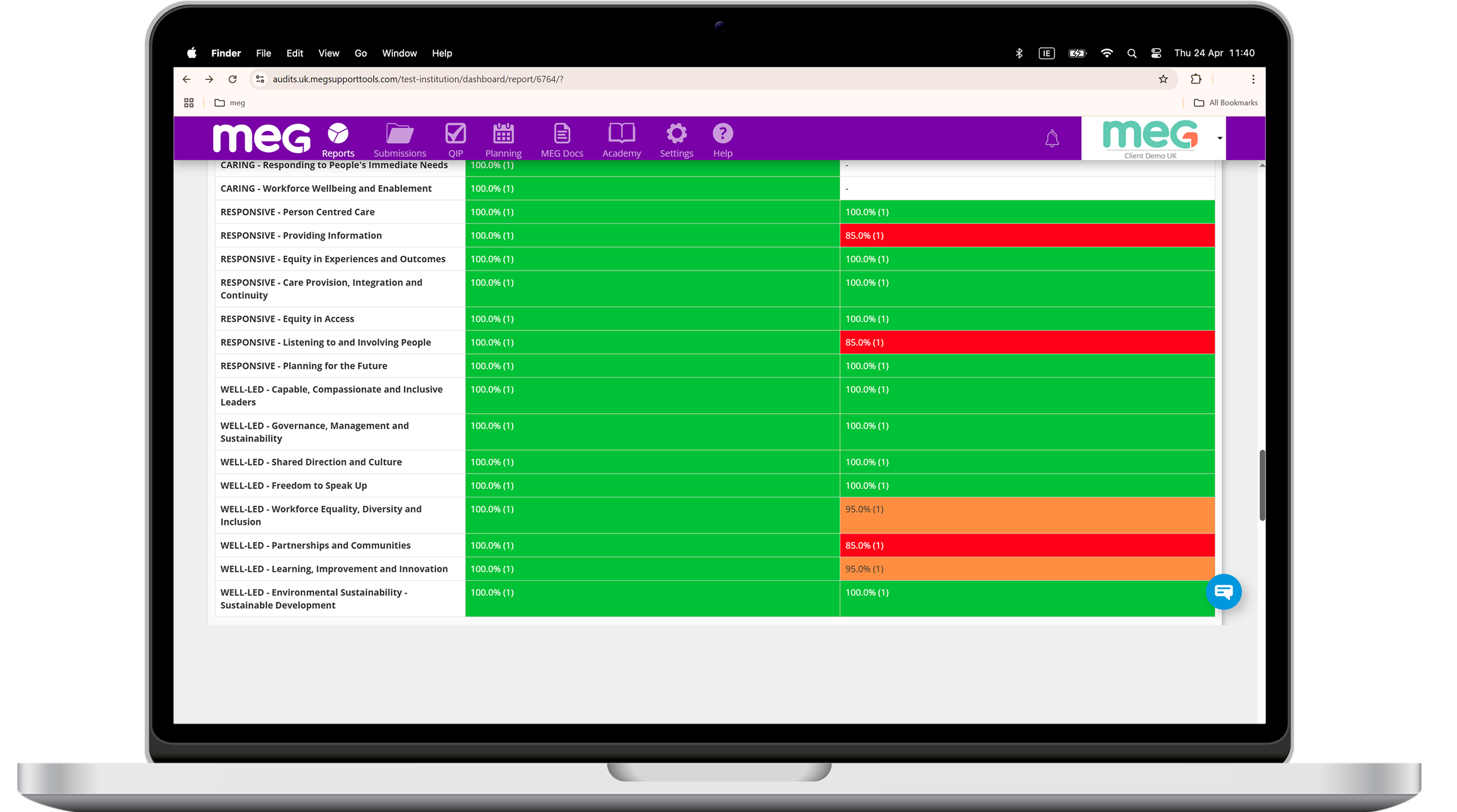Introduction: More Than Audit Coverage
When the CQC launched its Single Assessment Framework, many governance leads paused - not because they weren’t ready, but because they knew this would ask something different of their audit programmes.
Not just more coverage.
More meaning.
We’ve had the privilege of working alongside NHS governance teams adapting to this change, not with panic, but with intention.
This post reflects what those teams have taught us: how they’re realigning audits to the new CQC Quality Statements, what’s working, and where the real opportunities are.
What's Changed and Why It Matters
The move from KLOEs to 34 Quality Statements was more than a structural update. It reframed what the CQC values in audits:
Less about checking compliance
More about demonstrating outcomes
Less about volume
More about triangulation: audit + incident + feedback + assurance
For governance leads, this shift presents a question:
“Are our audits generating the kind of evidence CQC is actually looking for?”
What Teams Are Learning in Practice
1. Audits Are Being Seen as Evidence Generators
Rather than audit as a standalone task, teams are starting to use it as a way to surface assurance that matters to execs, to staff, and to inspectors.
In one Trust, we saw teams stop referring to audits as “compliance checks” and start calling them “assurance insights.” That language shift unlocked a mindset shift.
2. Templates Are Evolving (But Staying Pragmatic)
Some partners have co-designed new audit templates directly mapped to Quality Statements. Others are tagging existing templates and using MEG to report them by domain.
There’s no one-size-fits-all, but most effective teams do less reworking than expected, and more reframing.
Example: a “Medication Safety” audit was simply retagged under the statement: “We learn when things go wrong.” The audit questions didn’t change, but the reporting narrative did.
3. Services Want Clarity, Not More Burden
Frontline teams often say they’re happy to participate in audits, as long as it’s clear what it’s for. Tying audits visibly to CQC domains and themes has improved engagement in several sites using MEG.
Rather than adding audits, some Trusts are consolidating:
Combining multiple overlapping audits into one aligned format
Using Quality Statements as thematic anchors
Creating visual dashboards to show what’s covered and what’s not
What MEG Helps Surface
Governance leads using MEG have shared that the most valuable shift has been visibility. Some of the key benefits we’ve seen:
✔️ Domain-Tagged Audit Templates
Audits mapped to CQC domains and Statements using in-platform tagging
✔️ Dashboard Filters by Domain or Theme
Easily see what’s been audited under Safe, Well-Led, Responsive, etc.
✔️ Gaps and Overlaps Made Visible
Trusts can spot under-audited Statements, or consolidate where duplication exists
✔️ Action and Outcome Linking
MEG lets teams connect an audit to its follow-up actions, risks, and training, making it easier to tell the story of impact
Suggestions from What We’ve Seen
From teams who’ve made the transition feel meaningful, not just compliant, we’ve observed some emerging patterns:
🧩 Start with what you already do
Rather than build from scratch, most teams begin by reviewing existing audits and tagging them to the new domains.
🔗 Link audits to other evidence
Teams get stronger assurance when audits are triangulated with:
Incident themes
Patient feedback
Policy reviews
Staff learning outcomes
📊 Let dashboards tell the story
Instead of lengthy audit logs, teams are surfacing domain-based visuals that show:
What’s covered
What’s overdue
Where improvements have followed
Related Reading
Conclusion: From Checklist to Confidence
Realigning audits to the CQC’s Quality Statements doesn’t have to mean overhauling your entire system.
Often, the biggest change is in how audits are framed, linked, and presented.
The teams we’ve learned the most from didn’t chase volume, they focused on value. And they built audit cultures that serve not just inspection readiness, but meaningful internal assurance.
Curious how your audit programme maps to the new CQC Statements?
Book a call with the MEG team and we’ll walk you through a domain-based snapshot of what’s possible.


